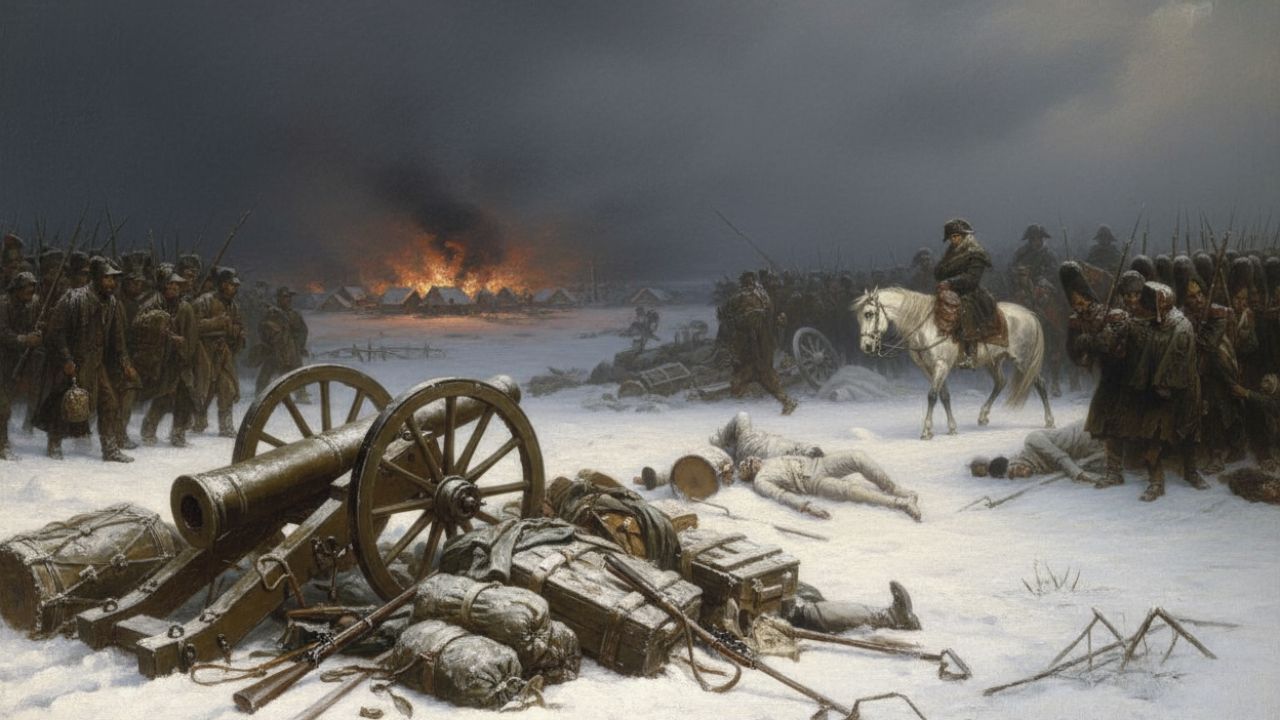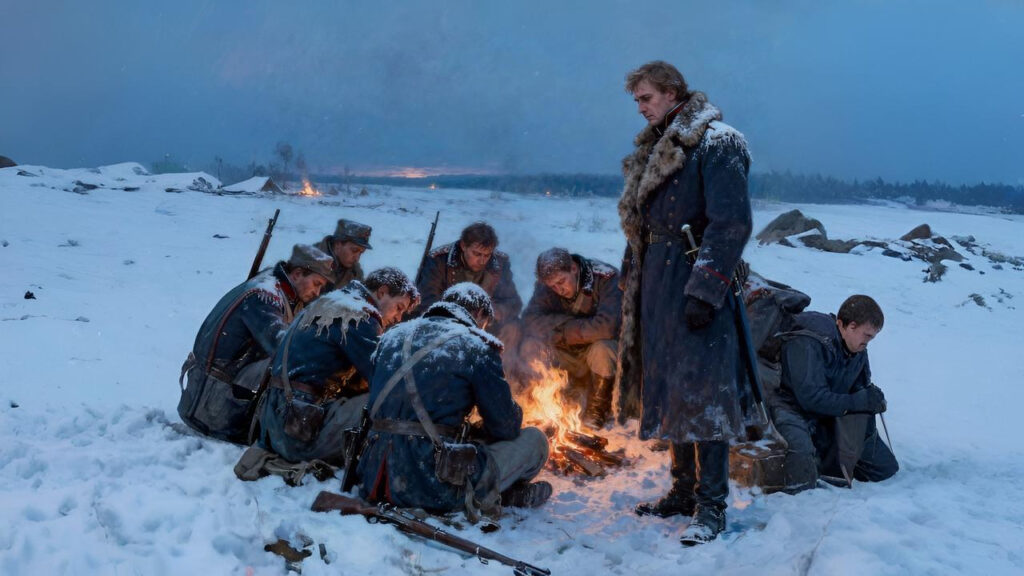
More than two centuries after Napoleon Bonaparte’s catastrophic retreat from Russia, cutting-edge genetic technology has finally revealed what killed his soldiers. Scientists have uncovered two unexpected diseases that devastated the Grande Armée, challenging long-held beliefs about one of history’s greatest military disasters.
What Happened During Napoleon’s 1812 Russian Campaign?
In June 1812, Napoleon Bonaparte invaded Russia with an army of between 450,000 and 600,000 soldiers, the largest force ever assembled for a single European campaign. By the time his army crossed back over the Neman River in December, fewer than 50,000 remained alive. Over six horrific months, the campaign cost millions of lives, making it one of the worst military disasters in history.
For generations, historians attributed these staggering losses to a combination of extreme cold, starvation, and typhus (a lice-borne disease common in military camps). Contemporary accounts from army doctors supported this theory, and when body lice were discovered on soldiers’ remains, it seemed to confirm typhus as the primary killer.
What Did the DNA Analysis Reveal?
The breakthrough came from an unlikely source: a mass grave discovered in 2001 during construction work in Vilnius, Lithuania, the capital city that Napoleon’s retreating army passed through in December 1812. The grave contained remains of at least 2,000 soldiers who died not on the battlefield but from disease, cold, and starvation.
Dr. Nicolás Rascovan, a palaeogenomicist at the Institut Pasteur in Paris, led a team that extracted DNA from the teeth of 13 soldiers and applied next-generation sequencing technology, far more sophisticated than methods available two decades earlier. Unlike older polymerase chain reaction (PCR) techniques that could only detect specific, suspected pathogens, the new approach screened for any known disease-causing organisms.
The results were startling. Instead of finding evidence of Rickettsia prowazekii, the bacterium causing typhus, researchers identified genetic signatures of two completely different pathogens: Salmonella enterica serovar Paratyphi C, which causes paratyphoid fever, and Borrelia recurrentis, responsible for relapsing fever.
Understanding the Killer Diseases
Paratyphoid fever, a serious bacterial infection related to typhoid, spreads through contaminated food and water, conditions rampant in Napoleon’s army. Symptoms include sustained high fevers reaching 103-104°F, severe headaches, weakness, stomach pain, diarrhea or constipation, cough, and loss of appetite. Many patients develop characteristic rose-colored spots on their chest. The incubation period ranges from one to 10 days, and without treatment, symptoms can persist for weeks or months.
Relapsing fever, transmitted by body lice, earned its name from a distinctive pattern: sudden onset of high fever, chills, severe body aches, and confusion lasting three to five days, followed by apparent recovery. Then the fever returns, often multiple times. Each episode weakens the patient further. Complications include liver and spleen enlargement, heart inflammation, neurological problems, and widespread bleeding. Louse-borne relapsing fever typically causes one or two fever episodes, but can be fatal without treatment.
“Although these two diseases are different, they can result in similar symptoms such as high fever, fatigue, and digestive problems, and their simultaneous presence may have contributed to the soldiers’ worsening state, especially as they were already weakened by cold, hunger, and a lack of sanitation,” the Institut Pasteur researchers explained.

Historical Context and Significance
The soldiers buried in Vilnius endured unimaginable suffering during Napoleon’s retreat from Moscow. In September 1812, after the bloody Battle of Borodino, which left nearly 70,000 casualties in a single day, Napoleon entered Moscow, only to find it abandoned and deliberately set on fire by the Russians. He waited five weeks for a peace offer that never came. As winter closed in and supplies ran out, he ordered a desperate retreat.
The Russian army pursued relentlessly, using scorched-earth tactics, burning villages, crops, and food stores. Temperatures dropped to minus 35°C. Starving, frostbitten, and ravaged by disease, soldiers died in their thousands. By the time the remnants of the Grande Armée reached Vilnius, only about 50,000 troops remained, and some 20,000 sick and dying men were left behind when the army moved on.
British officer Robert Wilson, who witnessed the aftermath, described a monastery turned into a makeshift hospital: “7,500 bodies were piled up like pigs of lead over one another in the corridors; carcasses were strewed about in every part.” Corpses were dumped into mass graves, thrown into the Neris River, or burned outside the city.
Why the New Findings Matter
The research team was particularly surprised to discover that the Borrelia recurrentis strain found in the soldiers belonged to the same ancient lineage present in Britain during the Iron Age, 2,000 years earlier. This suggests the pathogen persisted in Europe for millennia, a finding with implications for understanding how diseases evolve and spread.
“Understanding how certain types of pathogens developed can give us a better chance of anticipating what a pathogen’s next step might be,” explained paleopathologist Leslie Quade of the Austrian Archaeological Institute. “If a certain once-widespread pathogen has become rare today, these infection-laden historical events may offer lessons to keep it from returning and to contain other similar modern pathogens”.
The study, published in Current Biology on October 24, 2025, demonstrates the power of modern paleogenomics. “It’s very exciting to use a technology we have today to detect and diagnose something that was buried for 200 years,” Rascovan said.






